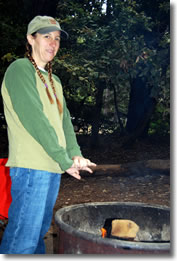Welcome to the Journal of the Sierra College Natural History Museum
Keely Carroll, Executive Editor

If there were one universal thing that all humans dream of doing, I would wager that thing would be to fly. I used to dream of flying every night as a child and I still do on occasion today. To look at a bird is to marvel at a wondrous feat of engineering that seems to border on magic. To wish to be a bird is to wish for what appears to be ultimate freedom from the regular constraints of us terrestrial organisms; but what type of bird to wish to be? A falcon built for speed, a vulture built to soar, a flycatcher built for acrobatics or a kingfisher built to dive. For that matter, why should a wish to be a bird be the only manner in which we can satisfy that desire for flight? Insects fly. Bats fly. Surely we need not be limited to birds!
What I find to be truly amazing about flight is that different lineages of organisms have developed ways to fly in different ways. That is why flight is the inspiration for this edition of the Journal of the Sierra College Natural History Museum. Flight is a great example of convergent evolution, which is the evolution of similar adaptations to similar conditions in unrelated organisms. What convergent evolution means for flight is that this ability developed in three separate lineages of organisms, which is no small feat. It would be incorrect to assume that all flighted lineages achieved this ability in the same way. Bats and birds gave up their arms to flight, but insects did not. Birds have an aerodynamic wing, but bats do not. And what of flying reptiles, those extinct masters of the sky? Flight has been achieved in different ways many times. Even within individual groups of organisms, such as the birds, where the characteristic of flight is a homologous characteristic, meaning that the characteristic has a shared heritage, the design of the wing and the body can be quite different from species to species.
In this edition you will find articles that highlight the ways in which these different groups of organisms fly. Richard Hilton gives us an article on flight in extinct reptiles. Dr. Winston Lancaster provides this issue with a wonderful explanation of not only flight in bats but also the two main theories as to how flight evolved. Nature writer, Gareth Huw Davies, provides an examination of the ancestry of birds and then goes on to discuss some of the wonderful adaptations and diversity that can be found within this group. Finally, this edition wraps up with a journal tradition where we focus on one of the courses that we teach at Sierra College. This edition features one of my favorite classes, Biology 14: Natural History, Ecology and Conservation, a class that I think every person would enjoy taking.
It is my hope that you enjoy this edition and perhaps the next time you see an animal in flight you will have a whole new appreciation for that achievement. As always this journal would not exist if not for the creative thinking of Gary Noy and the technical assistance of Mike Price, without whom none of these editions would have come together.
Keely Carroll
